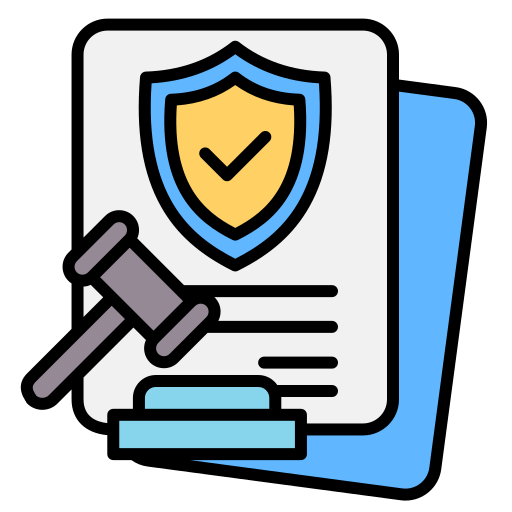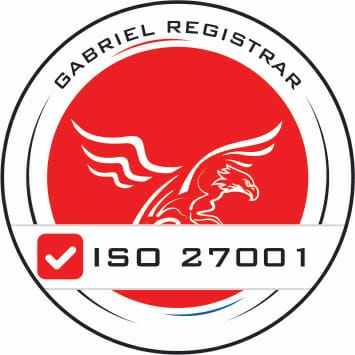API VAPT
Comprehensive Security Testing for Your APIs

Looking for the Best API VAPT Service?
Our API VAPT (Vulnerability Assessment and Penetration Testing) services are designed to safeguard your Application against potential threats and vulnerabilities caused by affected API’s
We provide customized API VAPT Audit that helps identify all the hidden vulnerabilities that might be missed by others.
What is API VAPT?
API VAPT is a security assessment that identifies and fixes vulnerabilities in your APIs to protect against cyber threats.
- Purpose: It’s an important service that helps keep your APIs secure from cyber-attacks.
- What It Does: Think of it as a security check-up for the connections that allow your software systems to talk to each other and share data.
- Process: We thoroughly inspect these connections to identify and fix any weaknesses.
- Importance: This helps protect your data, apps, and systems from being hacked or accessed without permission.
- Relevance: In today’s online world, it’s crucial to keep everything secure, and API VAPT is a key part of that protection.

Why is API VAPT important?
There are multiple benefits of getting API VAPT done for your Application.
Some of the most important are listed below.

Data Protection
Data Protection: API VAPT safeguards your data, preventing unauthorized access, data breaches, and leaks.

Business Reputation
Secure APIs build trust with customers, preserving your business's reputation.

Security Compliance
It helps you comply with data security and privacy regulations, avoiding legal issues.

Cyber Threat Mitigation
It proactively identifies vulnerabilities, reducing the risk of cyberattacks.

Client Trust
Secure APIs enhance trust among your clients and partners, ensuring the integrity of your digital interactions.

Cost Savings
Preventing security incidents saves you the potential costs of data recovery and remediation.

Data Encryption
It secures data transmitted through APIs, protecting sensitive information.

Strategic Advantage
By prioritizing API security, you gain a strategic advantage in the digital marketplace, as customers and partners increasingly demand secure interfaces.

Application Reliability
Secure APIs ensure your applications function smoothly without disruptions.

Long-term Viability
API VAPT secures your digital assets, ensuring the long-term viability of your applications and systems.
How do we conduct API VAPT?

STEP 1: Scope Definition
Define the scope of the assessment, including which APIs will be tested, the testing environment, and specific objectives.

STEP 2: Reconnaissance
Gather information about the APIs, such as endpoints, protocols, and communication methods.

STEP 3: Threat Modeling
Identify potential threats and vulnerabilities that could affect the APIs and their users.

STEP 4: Vulnerability Scanning
Utilize automated tools to scan for common vulnerabilities, including injection, authentication, and authorization issues.

STEP 5: Manual Testing
Perform manual testing to identify vulnerabilities that automated tools may miss, such as logical flaws and business logic issues.

STEP 6: Authentication Testing
Evaluate the strength of authentication mechanisms in place to prevent unauthorized access.

STEP 7: Authorization Testing
Assess the effectiveness of authorization controls, ensuring that users can access only the appropriate data and functions.

STEP 8: Data Encryption Testing
Verify that data transmitted and stored by the APIs is properly encrypted to protect sensitive information.

STEP 9: Session Management Testing
Examine how sessions are managed to prevent session hijacking and fixation.

STEP 10: Input Validation Testing
Check for input validation flaws that could lead to injection attacks, such as SQL injection or Cross-Site Scripting (XSS).

STEP 11: Error Handling Testing
Evaluate how the APIs handle errors and exceptions to prevent data leakage or system exposure.

STEP 12: Reporting
Compile and present the assessment findings, including identified vulnerabilities, their severity, and recommendations for remediation.

STEP 1: Scope Definition
Define the scope of the assessment, including which APIs will be tested, the testing environment, and specific objectives.

STEP 3: Threat Modeling
Identify potential threats and vulnerabilities that could affect the APIs and their users.

STEP 5: Manual Testing
Perform manual testing to identify vulnerabilities that automated tools may miss, such as logical flaws and business logic issues.

STEP 7: Authorization Testing
Assess the effectiveness of authorization controls, ensuring that users can access only the appropriate data and functions.

STEP 9: Session Management Testing
Examine how sessions are managed to prevent session hijacking and fixation.

STEP 11: Error Handling Testing
Evaluate how the APIs handle errors and exceptions to prevent data leakage or system exposure.

STEP 2: Reconnaissance
Gather information about the APIs, such as endpoints, protocols, and communication methods.

STEP 4: Vulnerability Scanning
Utilize automated tools to scan for common vulnerabilities, including injection, authentication, and authorization issues.

STEP 6: Authentication Testing
Evaluate the strength of authentication mechanisms in place to prevent unauthorized access.

STEP 8: Data Encryption Testing
Verify that data transmitted and stored by the APIs is properly encrypted to protect sensitive information.

STEP 10: Input Validation Testing
Check for input validation flaws that could lead to injection attacks, such as SQL injection or Cross-Site Scripting (XSS).

STEP 12: Reporting
Compile and present the assessment findings, including identified vulnerabilities, their severity, and recommendations for remediation.
Some of the Tools that we use to Conduct API VAPT!

Our team uses Burp Suite to find and fix security issues in your APIs, keeping your applications safe

We use Postman for manual API testing. It helps us check that everything works well and run tests

This helps us do deep security scans on your APIs, ensuring your applications are protected from vulnerabilities

Our testers use Insomnia for easy API testing, making sure every request and response is correct and efficient

For SOAP APIs, we use SoapUI. It helps us automate testing and make sure your services always meet high standards

We use OWASP ZAP to thoroughly test the security of your APIs, helping to find and fix any weaknesses

We use Swagger for penetration testing of RESTful APIs, making sure every part is documented and secure

Get In Touch
By filling this form ↓
FAQ's
In simple terms, API VAPT is a cybersecurity service that assesses the security of your application programming interfaces.
It's very much essential to safeguard your digital assets, customer data, and reputation.
Thats where API VAPT can help you and your organisation.
API VAPT is very much different from other forms of VAPT such as Network VAPT, Cloud VAPT, Android VAPT etc.
As API VAPT specifically targets APIs, ensuring a deep analysis of their security aspects, such as authentication, authorization, and data protection.
Yes, in Layman's Terms the explanation of API VAPT is something like this.
It involves a systematic evaluation of your APIs to identify vulnerabilities, test their security, and provide recommendations to strengthen them.
Our API VAPT service covers a wide range of APIs, including web APIs, cloud APIs, and more, regardless of the programming language or platform.
So, you do not need to worry about anything while choosing us as your API VAPT service providers.
There is no fixed duration as such. The duration varies based on the complexity of your APIs.
No matter how complex your API's are we strive to complete the assessment efficiently without disrupting your daily operations.
Some of the most common potential risks of ignoring API VAPT includes data breaches, unauthorized access, and the compromise of sensitive information.
In some cases it can also damage your organization's reputation.
Yes, your data is 100% safe and secure with us as we follow strict data security protocols to ensure the confidentiality and protection of your data during the assessment.
There are multiple ways in which API VAPT can benefit your development team.
Here are some of the ways:
Firstly, it provides actionable insights and recommendations that can help your development team improve API security during the development process.
Yes, we provide guidance and support to address and remediate any vulnerabilities discovered during the assessment.
Yes, API VAPT can certainly help you meet compliance requirements related to data security and privacy, such as GDPR and HIPAA.
It is advised to conduct Regular assessments, especially after significant changes to your APIs or infrastructure.
We can help you determine the optimal frequency of the assessments.
Yes, certainly API VAPT be applied to Legacy Systems.
It can assess both new and legacy systems to ensure their security, even if they use older technologies.
Here are some of the steps that you can take to secure your API's before an assessments.
Firstly, secure your APIs by implementing strong authentication, authorization, encryption, and monitoring.
It's very easy to to get started with API VAPT, contact us, by filling up the contact form above on this page. And our experts will guide you through the process, including scoping and assessment planning.
We work with both API providers and consumers, tailoring our assessments to meet the specific needs of your role.
Here is a glimpse of the key metrics we evaluate during APIT VAPT.
- authentication security
- data encryption
- error handling,
- and access control to ensure comprehensive API security.
Yes, we can assist in patching and updating APIs to address identified vulnerabilities and strengthen their security.
We have experience working with a wide range of industries, including fintech, healthcare, e-commerce, and more.
While it cannot guarantee prevention, API VAPT significantly reduces the risk of data leaks and breaches by identifying and addressing vulnerabilities.
No definitely not API VAPT is beneficial for businesses of all sizes, as API security is a concern for anyone using APIs to transmit and manage data.







